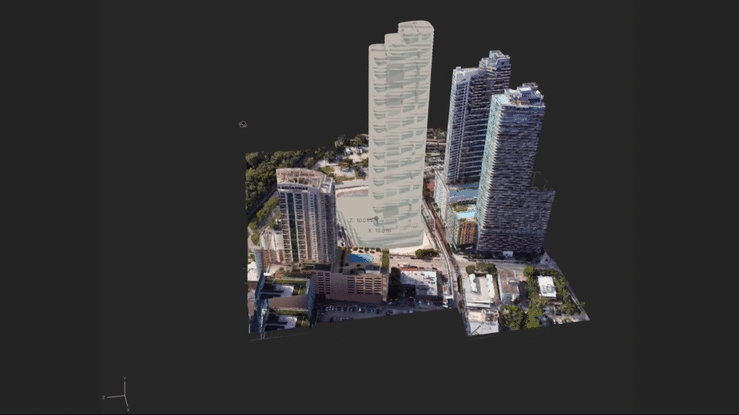
Building Digital Twins
Producing Dynamic Media
As the lead 3D specialist at modwell, Jonathan led the development and management of Modwell’s spatial computing and digital twin experiences, building a platform that brought properties to life across multiple devices and environments. These efforts allowed users to interact with real estate in new ways, creating dynamic AR, VR, and XR experiences that seamlessly bridged the physical and digital worlds.
From large-scale buildings to individual pieces of furniture, the digital twins Jonathan and his team created needed to be interoperable across several programs, accommodating assets of all sizes and offering real-time, immersive interactions.
Managing and rendering such complex digital twins efficiently led Modwell into the NVIDIA Inception program, where Jonathan worked to optimize workflows and increase rendering efficiency, enabling the creation of rich, detailed virtual experiences that were cost-effective and scalable.



_gif.gif)



Deploying 3D Locations
Managing 3D Geospatial Data
Additionally, Jonathan and his team spearheaded the development of an immersive 3D real estate maps experience, integrating 3D geospatial data from platforms like Cesium into Unreal Engine with the help of Google Maps APIs. These advanced visualizations allowed users to explore not only individual properties but also surrounding neighborhoods and entire cities.
However, distributing these heavy data models over the internet posed a significant challenge. To address this, the team leveraged generative AI to create neural radiance fields (NeRFs) of 3D cities, which allowed Modwell to offer realistic 3D representations without relying on traditional cloud streaming solutions, vastly reducing data load and making the experience more accessible.

Launching AR for mobile
Emerging media as social media
Jonathan’s vision extended these digital twin assets into AR mobile experiences, allowing consumers to interact with their prospective homes in their own physical spaces. By integrating with social platforms like Meta Spark and Snapchat AR, Modwell made it possible for users to place and explore 3D models of properties in real-time through augmented reality, creating a personalized, interactive experience.
This also included the ability to view AR representations directly on-site using Google AR Core, enriching the experience by layering digital models onto actual geospatial locations.
-high_gif.gif)
-high_gif.gif)





Extending Across Devices
Spatial media that engages
As XR and VR platforms like Apple Vision Pro and Meta Quest became more prominent, Jonathan, alongside a team of game developers and enigneers, transformed Modwell’s solution from a traditional 2D interface to a robust 3D spatial computing experience.
The system now fluidly navigates between MLS data and 3D assets, allowing users to explore 3D cities, neighborhoods, home layouts, and immersive 360 tours seamlessly.


These efforts represented a new level of detail and engagement in real estate browsing, making the digital exploration of properties more intuitive and immersive than ever before.
Engaging new audiences
3D environments : the new storefronts
_gif.gif)

At Modwell, Jonathan saw each 3D home or building as dynamic content with the potential to engage new audiences. Leveraging strategic partnerships with brands, Modwell introduced shoppable elements within these 3D environments, creating dynamic storefronts where product placements became an integral part of the viewing experience.
Monetizing dynamic content
By embedding 3D product catalogs into these environments, Modwell allowed brands to connect with consumers where it mattered, turning immersive property views into a new, engaging storefront and opening the door to monetization in ways that had never been possible in traditional real estate marketing.
_gif.gif)